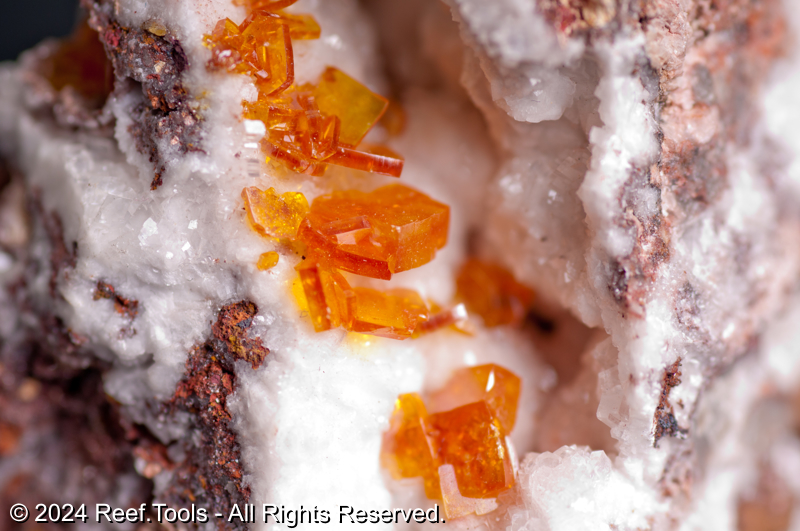Molybdenum (Mo)
Transition Metals
Atomic Number: 42
Last Reviewed: 12/15/2024
Molybdenum (Mo) is a trace element present in marine environments, playing a crucial role in various biological processes within reef aquariums. Its proper management is essential for maintaining a balanced and healthy ecosystem. Molybdenum is an essential micronutrient involved in enzymatic reactions, particularly those related to the nitrogen cycle. In reef aquariums, it supports the health of corals and other marine organisms by facilitating critical metabolic processes.
Natural Seawater Levels
Molybdenum concentrations in natural seawater typically range from 9 to 13 µg/L. Cambridge University Press
Risks
Deficiency: Insufficient molybdenum can disrupt the nitrogen cycle, leading to the accumulation of nitrates and potential stress on marine life.
Excess: Elevated molybdenum levels may interfere with the availability of other trace elements, such as copper and iron, potentially causing imbalances and affecting organism health. Reefpedia
Relevancy
Nitrogen Cycle Facilitation: Molybdenum is a cofactor for enzymes such as nitrate reductase and nitrogenase, which are vital for nitrogen assimilation and fixation. This aids in the conversion of nitrates to nitrogen gas, helping to regulate nitrogen levels in the aquarium.
Coral Health: Adequate molybdenum levels contribute to coral coloration and overall vitality, as it influences metabolic activities within coral tissues.
Ocean Values
| Reference Name | Low | High | Optimal | Unit |
|---|---|---|---|---|
| Fiji Ocean | 5.0000 | 15.0000 | 10.0000 | µg/L |
| Hawaii Ocean | 7.0000 | 20.0000 | 10.0000 | µg/L |
| Red Sea Ocean | 7.0000 | 15.0000 | 10.0000 | µg/L |
Regional Variations
Molybdenum concentrations in seawater are relatively uniform globally, but local factors such as freshwater input and industrial discharges can cause variations.
Dosage Recommendations
Target Level: Maintain molybdenum concentrations within the natural seawater range of 9 to 13 µg/L.
Supplementation: If supplementation is required, follow manufacturer guidelines and adjust dosing based on regular testing to maintain optimal levels.
Handling
Testing: Utilize precise analytical methods, such as ICP-MS, for accurate measurement of molybdenum concentrations.
Supplementation: If supplementation is necessary, use high-purity molybdenum sources and adhere to recommended dosing protocols.
Reef.Tools recommends: Maintain Molybdenum (Mo) concentrations between 7.0000 and 12.0000 µg/L.
References
- Bruland, K. W., et al. (1991). "Molybdenum in Ocean and Estuarine Waters." Journal of Marine Chemistry. (Cambridge.org)
- Twining, B. S., & Baines, S. B. (2013). "The Trace Element Composition of Marine Phytoplankton." Annual Review of Marine Science. (AnnualReviews.org)
- Falkowski, P. G., et al. (2008). "The Evolution of Nitrogen Fixation and Its Relationship to Molybdenum." Nature Geoscience.(Nature.com)
- Sunda, W. G., & Huntsman, S. A. (1995). "Interactions Between Trace Metals and Phytoplankton." Marine Chemistry. (ScienceDirect)
Difficulty
Rating: Moderate
Maintaining optimal molybdenum levels requires careful monitoring and precise supplementation to avoid deficiencies and prevent excess accumulation.
Categorization
Element Type: Transition Metal
Role: Trace Element
Usually Deficient
Molybdenum can be depleted through biological uptake and may not be adequately replenished without supplementation, especially in closed aquarium systems.
Essential
Molybdenum is crucial for enzymatic activities involved in the nitrogen cycle, directly impacting nutrient regulation and overall marine health.
Aliases
Mo, Molybdate Ion (MoO₄²⁻)
